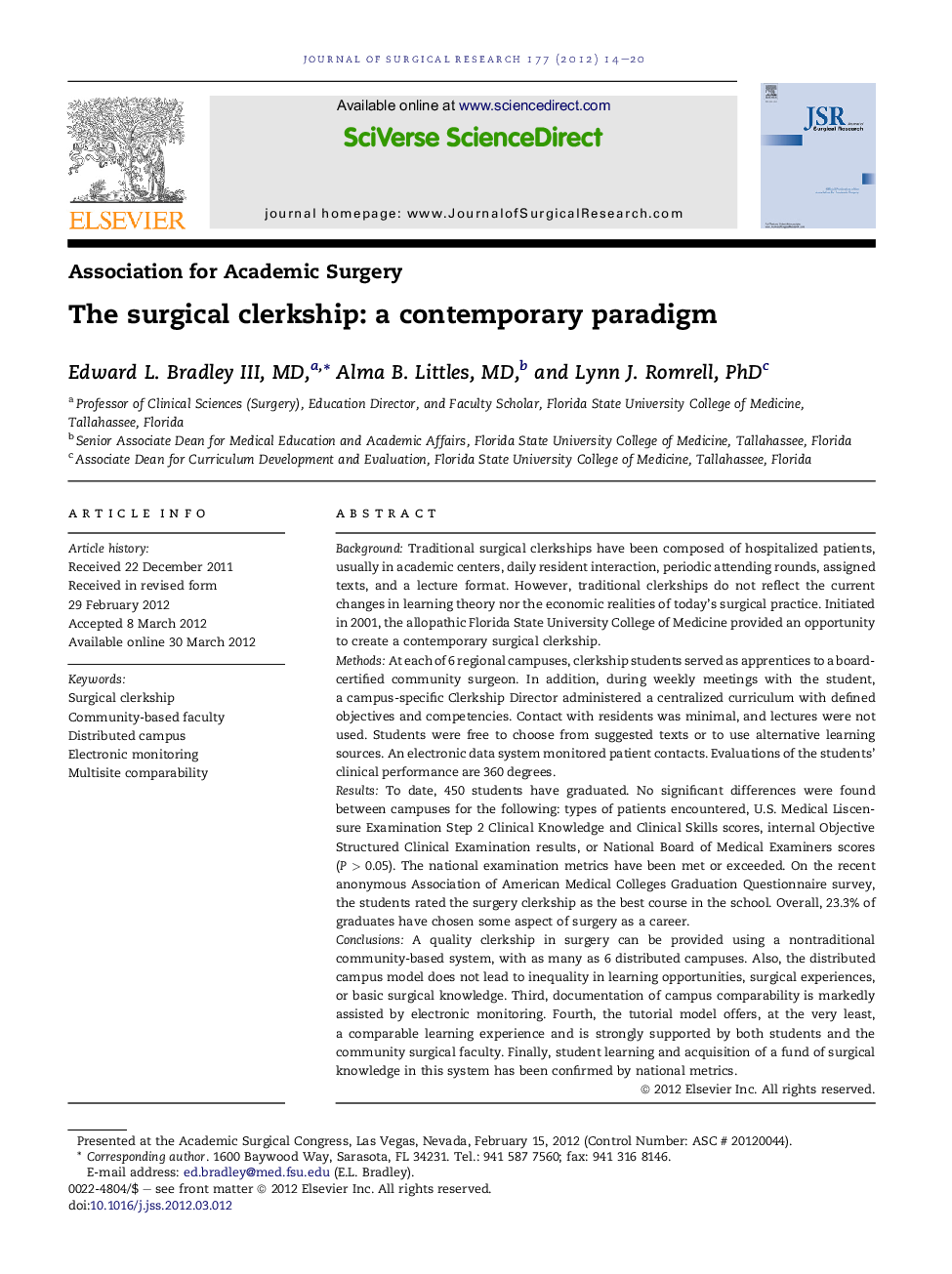| کد مقاله | کد نشریه | سال انتشار | مقاله انگلیسی | نسخه تمام متن |
|---|---|---|---|---|
| 4301480 | 1288439 | 2012 | 7 صفحه PDF | دانلود رایگان |

BackgroundTraditional surgical clerkships have been composed of hospitalized patients, usually in academic centers, daily resident interaction, periodic attending rounds, assigned texts, and a lecture format. However, traditional clerkships do not reflect the current changes in learning theory nor the economic realities of today’s surgical practice. Initiated in 2001, the allopathic Florida State University College of Medicine provided an opportunity to create a contemporary surgical clerkship.MethodsAt each of 6 regional campuses, clerkship students served as apprentices to a board-certified community surgeon. In addition, during weekly meetings with the student, a campus-specific Clerkship Director administered a centralized curriculum with defined objectives and competencies. Contact with residents was minimal, and lectures were not used. Students were free to choose from suggested texts or to use alternative learning sources. An electronic data system monitored patient contacts. Evaluations of the students’ clinical performance are 360 degrees.ResultsTo date, 450 students have graduated. No significant differences were found between campuses for the following: types of patients encountered, U.S. Medical Liscensure Examination Step 2 Clinical Knowledge and Clinical Skills scores, internal Objective Structured Clinical Examination results, or National Board of Medical Examiners scores (P > 0.05). The national examination metrics have been met or exceeded. On the recent anonymous Association of American Medical Colleges Graduation Questionnaire survey, the students rated the surgery clerkship as the best course in the school. Overall, 23.3% of graduates have chosen some aspect of surgery as a career.ConclusionsA quality clerkship in surgery can be provided using a nontraditional community-based system, with as many as 6 distributed campuses. Also, the distributed campus model does not lead to inequality in learning opportunities, surgical experiences, or basic surgical knowledge. Third, documentation of campus comparability is markedly assisted by electronic monitoring. Fourth, the tutorial model offers, at the very least, a comparable learning experience and is strongly supported by both students and the community surgical faculty. Finally, student learning and acquisition of a fund of surgical knowledge in this system has been confirmed by national metrics.
Journal: Journal of Surgical Research - Volume 177, Issue 1, September 2012, Pages 14–20